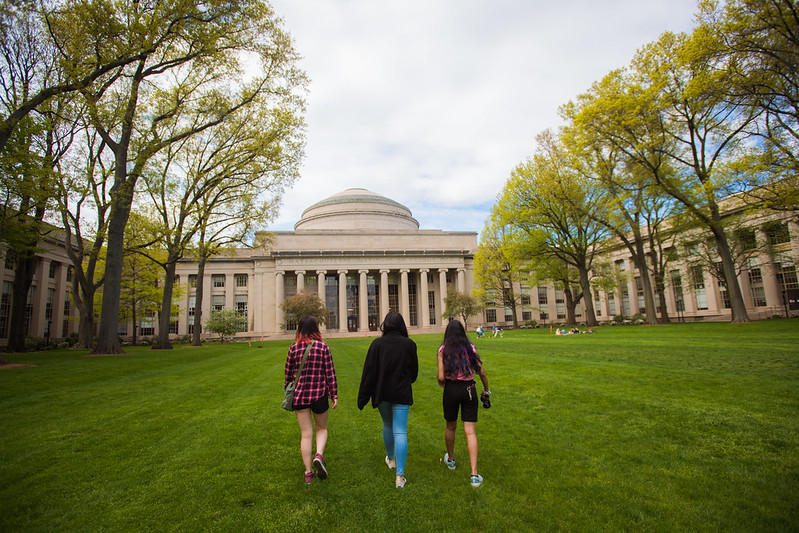MIT’s commitment to undergraduate financial aid will remain strong for the 2024-25 academic year, increasing to an estimated budget of $167.3 million. The increase will more than offset a 3.75 percent percent rise in tuition, to $61,990 ($62,396 including fees), and other living expense increases. The estimated average MIT scholarship for students receiving financial aid next year is $63,146.
Moreover, for students coming from families with incomes of $75,000 and less, their parents will not be expected to contribute to the cost of attendance, which includes tuition, housing, food, and personal expenses.
“MIT takes enormous pride in ensuring that any student who attends can dive into all the things that make our educational experience special, both our rigorous academic programs and the ‘secret sauce’ experiences — like experiential learning, social impact opportunities, study abroad, and team and club sports and other activities,” says Ian A. Waitz, vice chancellor for undergraduate and graduate education and the Jerome C. Hunsaker Professor of Aeronautics and Astronautics.
The 2024-25 undergraduate financial aid program will continue prior enhancements, including making MIT tuition-free for families who have typical assets and whose incomes are below $140,000, and providing additional financial aid dollars that will reduce the amount paid by most families.
Last year, more than 39 percent of MIT undergraduates received aid sufficient to allow them to attend the Institute tuition-free. MIT is one of only eight U.S. colleges with a fully need-blind undergraduate admissions policy that meets the full financial need of all students, and it continues to be focused on making the cost of an MIT education more affordable. The new financial aid enhancement also made it possible to admit more students through the QuestBridge match this year (56), increasing access for low-income students.
“In parallel with increasing access, we are also ramping up our resources for academic success. The Undergraduate Advising Center (UAC) was recently launched as part of a long-standing effort supported by students and faculty. We envision the UAC as the anchor office of a future advising hub, integrating academic advising and support, financial services, experiential learning, and career development. The UAC is already supporting first-years to seniors and has revitalized and expanded the MIT First Generation/Low Income Program,” adds Waitz.
While the Institute’s financial aid program primarily supports students from lower- and middle-income households, even families earning more than $250,000 may qualify for financial aid based on their circumstances, such as if two or more children are in college at the same time.
About 58 percent of MIT’s undergraduates receive need-based financial aid from the Institute, and about 20 percent receive federal Pell Grants, typically awarded to undergraduate students who display exceptional financial need. MIT treats the Pell Grant in a unique way to further support low-income students. Unlike most other colleges and universities, MIT allows students to use the Pell Grant to offset what they are expected to contribute through work during the semester and the summer. MIT also recently changed its financial aid policies to provide more support for U.S. veterans and veterans’ dependents.
When measured in real dollars, the average cost of an MIT education for those who receive financial aid has been reduced by almost 25 percent over the past two decades.
For undergraduates not receiving any need-based financial aid, tuition and fees will be (as noted earlier) $62,396 for the 2024-25 academic year. Including housing and dining costs, the total cost of attendance will come to $85,960 (based upon residing in a Tier 1 double room for the year, being on a full meal plan, and taking into account books and estimated personal expenses). Expenses may vary depending upon a student’s choices.
In 2023, 86 percent of MIT seniors graduated with no debt; of the 14 percent who did assume debt to finance their education, the median indebtedness at graduation was $14,844. Furthermore, graduating MIT students report some of the highest starting salaries across a range of industries relative to their peers.
“It’s critical that students are well-positioned when they graduate and benefit from a whole student education, especially as technology and innovation advances, from generative AI to addressing climate change to fundamental science. So, we are exploring how our academic programs can be improved and enhanced to meet students where they are and to prepare them to be nimble and always curious,” says Waitz.
For more detailed information regarding the cost of attendance, including specific costs for tuition and fees, books and supplies, housing and food, as well as transportation, please visit the Student Financial Services website.









